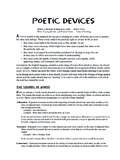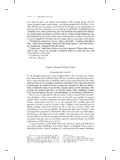Transcription of A COMPREHENSIVE PHENOMENOLOGY OF THEORIES …
1 James Hillman / EMOTION Preface. PANTHEATRE Myth and Theatre Festival For study purposes only. EMOTION. A COMPREHENSIVE PHENOMENOLOGY OF THEORIES AND THEIR. MEANINGS FOR THERAPY. James Hillman Northwestern University Press Evaston, Illinois 60208-4210. Copyright 1960, 1962 by James Hillman. First Published by Routledge and Kegan Paul, Ldt. PREFACE 1991. ON THE OCCASION of this new edition, I want to add some reflections in keeping with the last phrase of the subtitle of this book: "meanings for therapy " The main substance of therapeutic analysis since its inception with Freud are emotions: fear, inertia, grief and depressions, dread and anxiety, anger, shame, hatred, and of course the complexities of love, desire, lust, jealousy, need, compassion, sympathy, obsession.
2 These states of soul, the material of any therapeutic session world- wide, were also once the subjects of deep philosophical thought. Plato, Plutarch, the Stoics, Thomas Aquinas, Descartes, Spinoza, Hume all wrote treatises on the various emotions; and, if you look to Western theology with an eye to emotion, from Jesus and Paul on you will find that the theologians, too, have been most concerned with what to do with, about and against the passions of the soul. From an archetypal perspective by which 1 mean that view which holds emotions to be primary and irreducible, transhuman and ubiquitous, of major value and forcing "unconsciousness" (Chapter V) on their subject from this archetypal perspective, emotions are the theme of earthly life They keep us all alike, give us all equal opportunity to be sane and insane, victims of our rages and hatreds, of obsessive jealousies shames, and disgusts, of our wild hopes and longings.
3 And they do not belong only to psychology. Literature, art, crime, politics and social education are all theaters of emotion, to say nothing of the daily round of the family household. When Shakespeare's plays were performed at the Globe Theatre, royalist and commoner alike were amused: cripples, fools, scholars, monks, soldiers, and nobles all attended, wept and laughed, submitting to the same emotions. We can thank emotion for our shared humanity. We may be less able to enact an emotion if we are handicapped, retarded, or socially deprived; we may be less willing to feel it, show it, speak from it if aged, abused, or impoverished. But the qualities of lust, grief, and fear belong to human heritage.
4 Facial expressions of emotions studied by Theophrastus in antiquity and, more famously, by Darwin in Victorian times, still reveal the universality in human features of happy smiles, sad frowns, angry glares, shameful blushes, even if cultural meanings vary (Chapter XV). To be in the grips of an emotion makes us instantly intelligible and commonly human and beyond human, too. After some thirty-five years of analytical practice and teaching, 1 am happy to return to this, my first major scholarly project, because by reintroducing this book, 1 may reflect on therapy as a whole from a most basic perspective, a base that is neither technical nor school-bound but simply "emotional.
5 " As well, 1 may turn in particular to those therapies whose method uses the expressive arts because their focus is mainly on emotion, rather than cognition, family systems, insight, recall, dream analysis, hypnosis, and so on. EMOTION page 1. James Hillman / EMOTION Preface. PANTHEATRE Myth and Theatre Festival For study purposes only. What do the expressive therapies actually do? not what do they set out to do, expect, or look for, or how they account for what goes on in a session. I am not here concerned with theoretical explanations about fathers and mothers, about transitional objects and symbolization, about abreaction and interpretation. Rather, my focus is what actually goes on when a patient begins to dance, to choreograph or paint his or her state of soul, to speak aloud freely in a dramatic tirade or a poetic soliloquy, to sculpt it in clay or lay it out in a collage.
6 And I want to ask about the "it" that is being presented, expressed, shown, or formed by means of these various arts. Clearly, the "it" is an emotion, an emotionally tinged state of soul. For even if it is said to be a trauma, a memory, a dream scene, or a present confusion and helplessness, what we like to call a "problem," with a lover, an employer, a parent the emotion is the content that brings the person to therapy. Only when a "problem" a relationship, a memory, a dream becomes suffering, when we are affected by the problem, does it enter us and we enter therapy. As the following pages show in careful detail, most theoretical models hold that rages, fears, and passions are our personal responsibility.
7 Somehow, somewhere, they are located inside us, and the search for location is reported in Chapters IX and X. Certainly, we feel them there inside: the sadness behind our eyes, the sob in the throat, the tight chest; the grip of fear in the bowels; the fixed, searching, paranoid, jealous stare watching the beloved's face in a restaurant. Certainly, as THEORIES of emotion from Galen to William James have stated, emotion is an interior physiological condition. Certainly, emotion is inside the skin, deep inside the hippocampus, the hormonal system, the animal body, residing in the core of our inmost being. My contention here, however, shall be that though they be felt deeply, and we suffer emotions physically and inwardly, this fact does not make them "ours.
8 " Rather, I believe that emotions are there to make us theirs. They want to possess us, rule us, win us over completely to their vision. In short, as the English Romantic poet William Blake said, "Some good we may do when the man is in a passion, but no good when the passion is in the man." To have a passion in me is demonic; to be in a passion, in the world of the emotion and grasped by the way it signifies all things with a specific vision or insight, may move the psyche to a deeper and epiphanic connection with the world (Chapters XI and XV). Since the main task of therapy consists in interiorizing all psychic events whatever so that they can be reflected, it tends to conceive emotions inside as "mine.
9 " This assumption leads therapy to take somewhat uncritically the feeling of affliction, thereby literalizing the heightened feelings of "me-ness" that result from emotions. This, in turn, leads to an exaggeratedly personal sense of abuse and victimization, a sense that comes from the personal way we conceive emotion, and not only from abusive persons. Let us be quite clear: even if I never feel more "me" than when in the grip of an emotion, it is in its grip, not mine. That an emotion gives the feeling that it is my private affair does not thereby make the emotion "mine." Our cultural bias attaches a "me" to whatever happens. We own experiences before we even feel them through or know what they want.
10 Private property, ownership, is our way of life. Were we in Haiti, set on Greenland's coast, up the river Niger, or in ancient Greece, an emotional seizure would be seen as a visitation of externalities. A mood descends, a passion strikes, an urge rises up and won't let go. These would be imagined as "gifts" (William James, Chapter XIX). of the spirit or of what? But not mine. And, they would be treated with the respect due to guests rather than with the hostility that would attempt to get rid of invaders by tranquilizers, moral commandments, or abreaction. EMOTION page 2. James Hillman / EMOTION Preface. PANTHEATRE Myth and Theatre Festival For study purposes only. But if imagined to be inside me, emotions are, of course, "too much" to contain and so become, in Blake's word, demonic, and need abreaction (exorcism).






